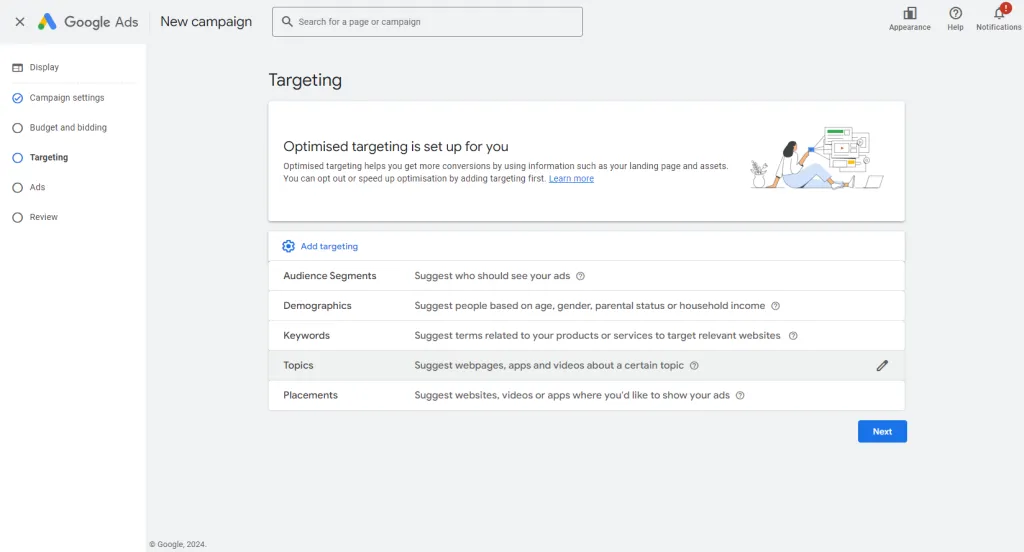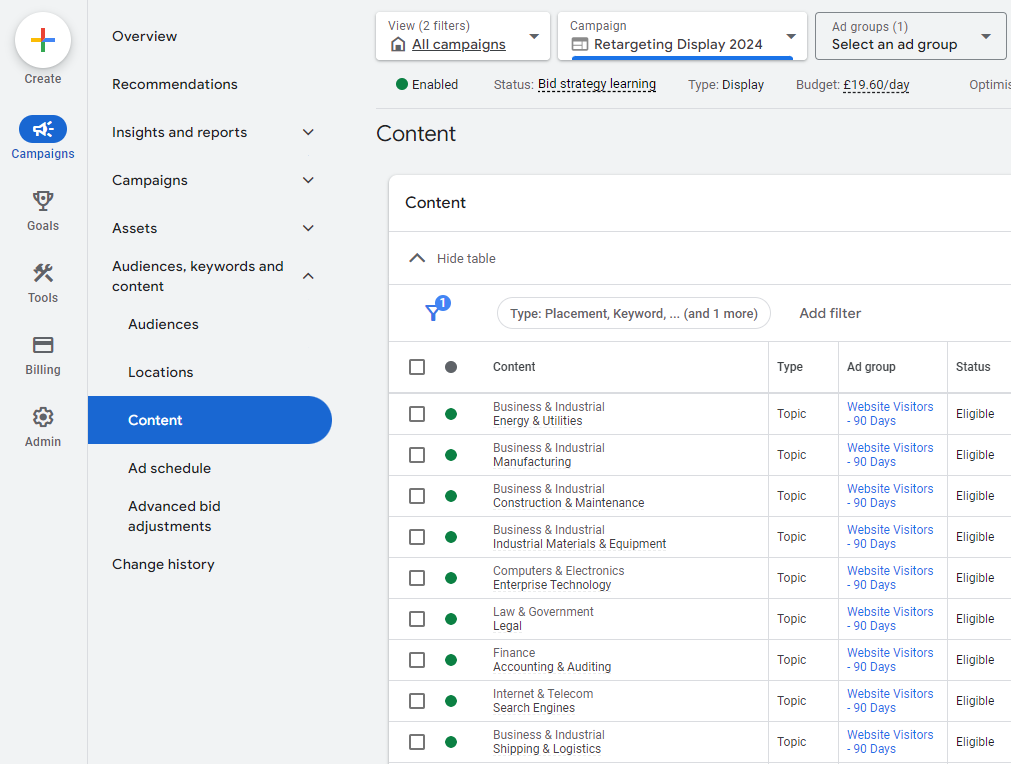You may be hearing more and more about the transition from third-party cookies to Google topics. While it’s certainly a big change in the online advertising world, it’s not all doom and gloom, as you may fear. You can read more about the change in greater detail; however, in this article, we will look at how to use Google Topics so you can immediately start preparing for the cookies phase-out in Google Ads.
At Growthlabs, we leverage the latest tech to craft unique strategies that push boundaries and drive growth. This guide will help you set up Google retargeting display ads with topic targeting (the alternative to relying on third-party cookies). Whether you’re setting up a new campaign or adding topics to an existing one, we’ve got you covered.
Table of Contents
- What are Google Topics?
- Setting Up Google Topics for a New Campaign
- Adding Google Topics to an Existing Campaign
- Proper Preparation Prevents Poor Performance
What are Google Topics?
Topics API is Google’s answer to the end of third-party cookies. Topics enable advertisers to present ads based on user’s interests without more privacy-invasive methods.
Topics work by analysing a user’s browsing behaviour on Chrome. When a user visits a website, the API will assign the user up to three topics that are relevant to the content of the site they visited. Targeted ads are then aimed at the tags rather than using any personal data of the user themselves. Whoever has those tags, will see your ads.
Setting Up Google Topics for a New Campaign
- Create a New Campaign:
o Log in to your Google Ads account and click on the “Campaigns” tab.
o Click the plus button (+) to create a new campaign.
o Choose the campaign goal, such as “Sales” or “Leads.”
o Select “Display” as the campaign type. - Set Up the Campaign:
o Enter your campaign name, location, language, bidding strategy, and budget.
o In the “Additional settings” section, ensure you select the appropriate options for dynamic ads if you are using them. - Add Topic Targeting:
o Navigate to the “Targeting” section of the campaign setup.
o Click on “Add targeting” and select “Topics.”
o Browse through the available topics or use the search bar to find topics relevant to your ads. For instance, if your product is related to finance, you might select topics like “Banking & Finance” or “Investment Services”.
o Add the selected topics to your campaign. - Create Your Ad Group and Ads:
o Set up your ad group by defining the audience, setting the bid, and creating your ads.
o Use responsive display ads to automatically adjust the size, appearance, and format to fit available ad spaces. - Review and Launch:
o Review your campaign settings and ensure everything is set correctly.
o Click “Create campaign” to launch your campaign.


Adding Google Topics to an Existing Campaign
- Access Your Existing Campaign:
o Log in to your Google Ads account and navigate to the “Campaigns” tab.
o Select the existing display campaign you want to edit. - Navigate to Audiences, Keywords, and Content Tab:
o Within your selected campaign, go to the “Audiences, keywords, and content” tab.
o Click on “Content” and then “Topics.” - Add New Topics:
o Click on the plus button (+) to add new topics.
o Browse through the list of available topics or use the search bar to find topics relevant to your campaign.
o Select your target topics and add them to your campaign. - Adjust Your Ad Group Settings:
o Ensure your ad groups within the campaign are set to use the newly added topics.
o You might need to adjust bids or other settings to optimise for the new targeting options. - Save and Review:
o Save your changes and review your campaign settings.
o Monitor the performance of your campaign with the new topic targeting to ensure it meets your goals.
Proper Preparation Prevents Poor Performance
Whilst the third-party cookie phase-out hasn’t yet been completed, it’s better to prepare your ad campaigns ahead of time. Currently, you can still set an audience for your retargeting display ads targeting recent website visitors. And those display ads will still follow those contacts around the internet across various other sites they visit. This, however, is due to end at some point in 2024.
By implementing your topic targeting on ads right now, as well as keeping your usual audience targeting, you can help cushion any metric drop-off when the phase-out eventually affects your accounts.
For more information or support in getting your B2B marketing ahead of the curve, reach out to us today and let us know how we can help!
